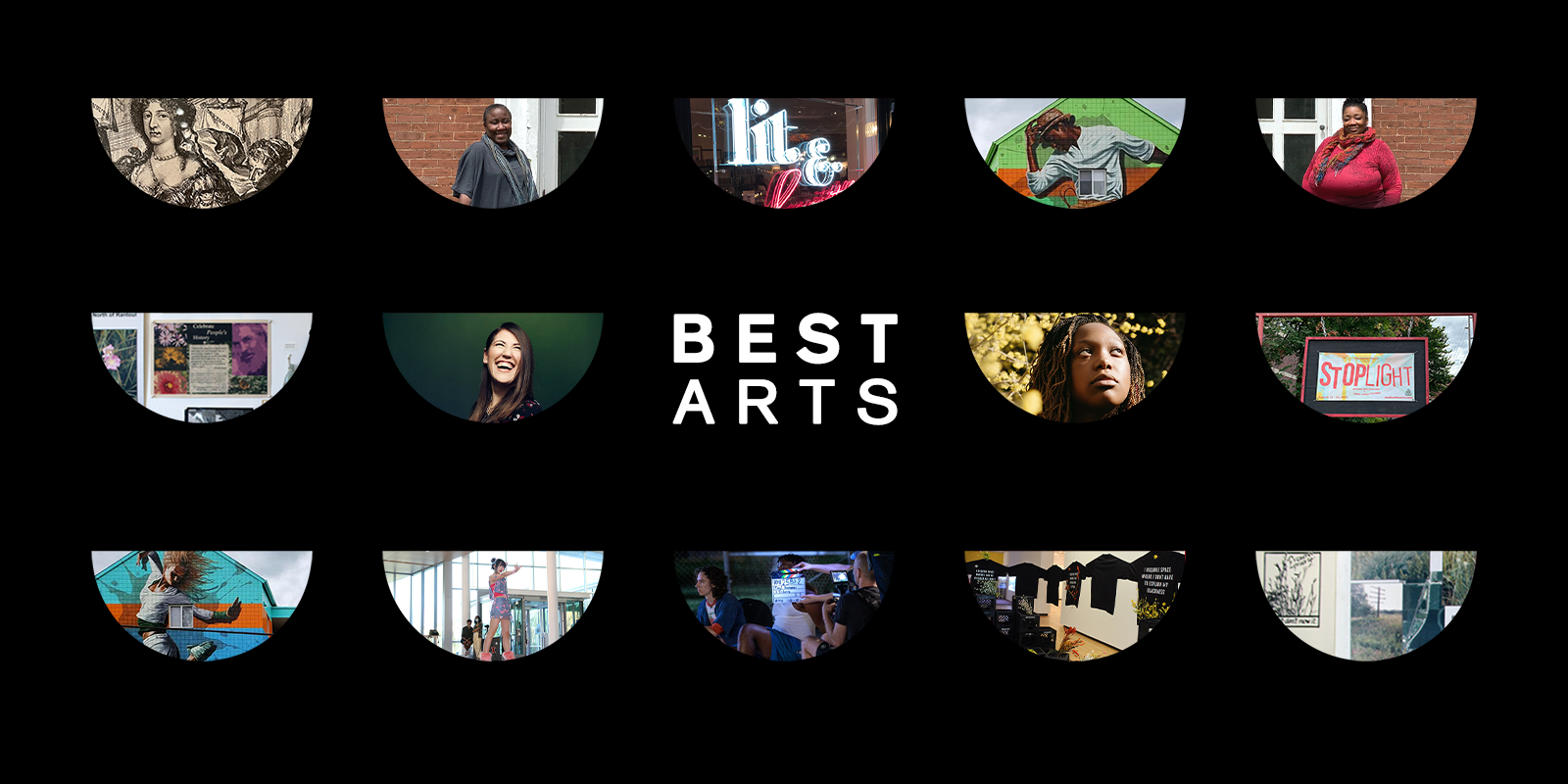This was the year that C-U artists and arts fans were waiting for. Festivals and live performances were back in full, and new initiatives began to emerge. We witnessed powerful art born out of the continuing pain of multiple pandemics. And, we began to see a broader and more diverse range of voices given center stage. Challenging, surprising, and inspiring, 2022 brought with it a full slate of BEST in arts picks.
— Debra Domal, Arts Editor
Editor’s Note: Post-publication, Smile Politely learned that Stoplight was not the Station Theatre’s first production of a play written by a local playwright. Previously produced plays by local playwrights including Deke Weaver, Gary Ambler, Mike Trippiedi and Gabrielle Reisman are among the Station Theatre’s history. We apologize for this error. We appreciate that our eagle-eyed theatre readers brought this to our attention. With this in mind, we reframe this BEST entry as a reinvigorated return to producing plays by local writers, with particular attention to centering the voices of BIPOC playwrights. Please celebrate the fact that this tradition continues on and adapts accordingly to the future.
BEST new direction: The Station Theatre producing original plays by local writers
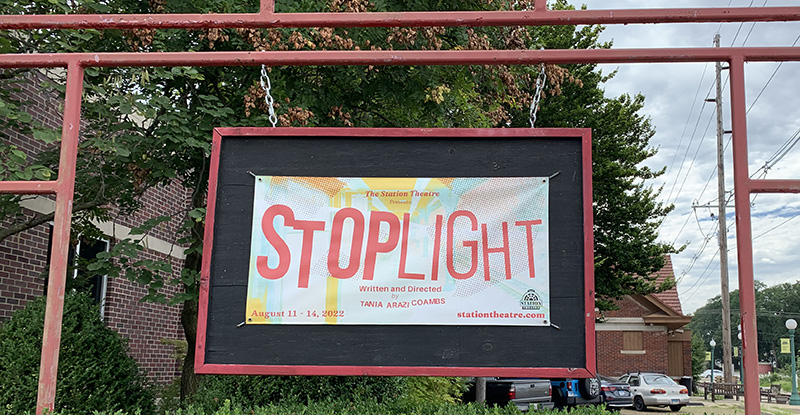
Photo by Debra Domal.
When I set out to meet Tania Arazi Coambs at the Station Theatre to discuss the upcoming production of her original play, I knew I was about to meet someone insanely talented. But what I didn’t know was that Stoplight was in fact the first original play written by a local writer that the Station had ever produced. Created in the tradition of devised theater along with young actors from the Station’s recent workshops for teens of color, Stoplight was a stellar candidate for the first. And now, months later, I am thrilled to see Nicole Anderson-Cobb’s Homegrown: An Insurrection Play join its ranks. For local theater to remain relevant, it must truly reflect a diversity of experiences. And this must start by broadening the spectrum of voices and stories told. Kudos to the Station for taking this important step. I look forward to seeing more locally-sourced plays produced, and perhaps to that end, the development of an infrastructure to support and mentor emerging playwrights. (DD)
BEST contemporary exhibition: Black on Black on Black on Black, Krannert Art Museum
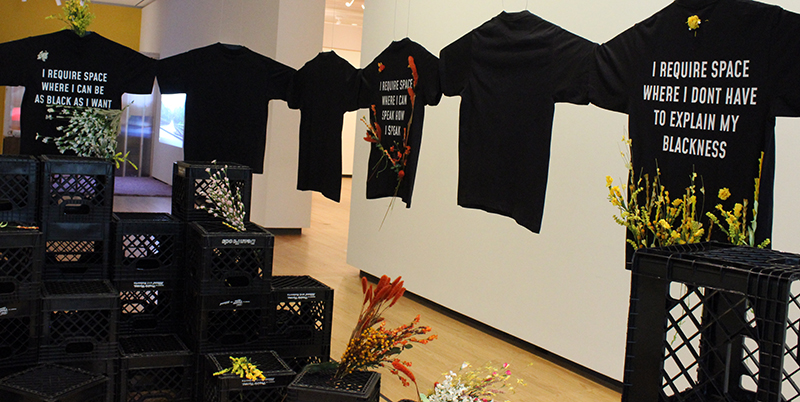
Photo by Debra Domal.
Four Black faculty artists from the University of Illinois School of Art & Design, each working in different mediums, created four deeply personal embodiments of Black space that are so much more than an art installation. In Black on Black on Black on Black, Patrick Earl Hammie, Stacey Robinson, Blair Ebony Smith, and Nekita Thomas commenced the richest and widest-reaching public engagement experiment this town has seen. Filled with panel discussions large and small, both on campus and in the community, BoBoBoB started a long overdue conversation about Black voices in art museums and universities, and what it means to center Blackness in historically white spaces. Music and memory weave throughlines between these four spaces, which, at their core, invite viewers to reimagine what future Black spaces can be and do. Continue the conversation with a visit to In Blackest Shade, In Darkest Light, curated by Patrick Earl Hammie at Parkland College’s Giertz Gallery through February. (DD)
BEST shot in the arm to the C-U film scene: Final Summer
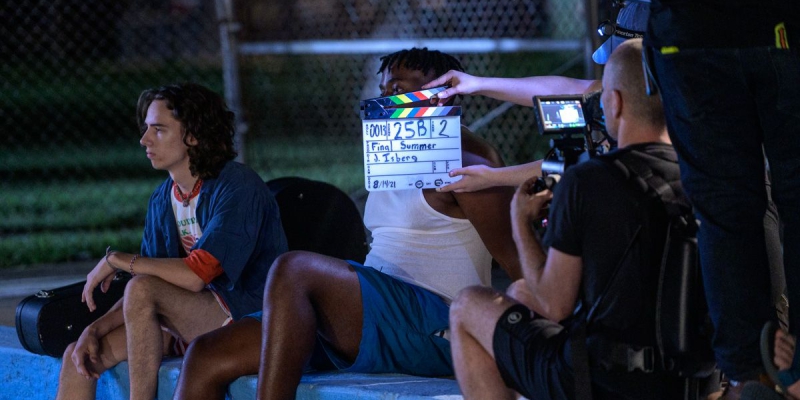
Photo by Della Perrone; image courtesy of John Isberg.
From its Kickstarter campaign to its October showings at the Harvest Moon Drive-in Theatre and the Savoy 16, John Isberg’s Final Summer has been a welcome reminder of what it’s like to have a local film scene here in C-U. This showcase of local creative and technical staff is in the running for festivals, which means even more eyes on John Isberg, Final Summer, and the C-U film scene. (DD)
BEST historical exhibition: Fake News & Lying Pictures: Political Prints in the Dutch Republic, Krannert Art Museum
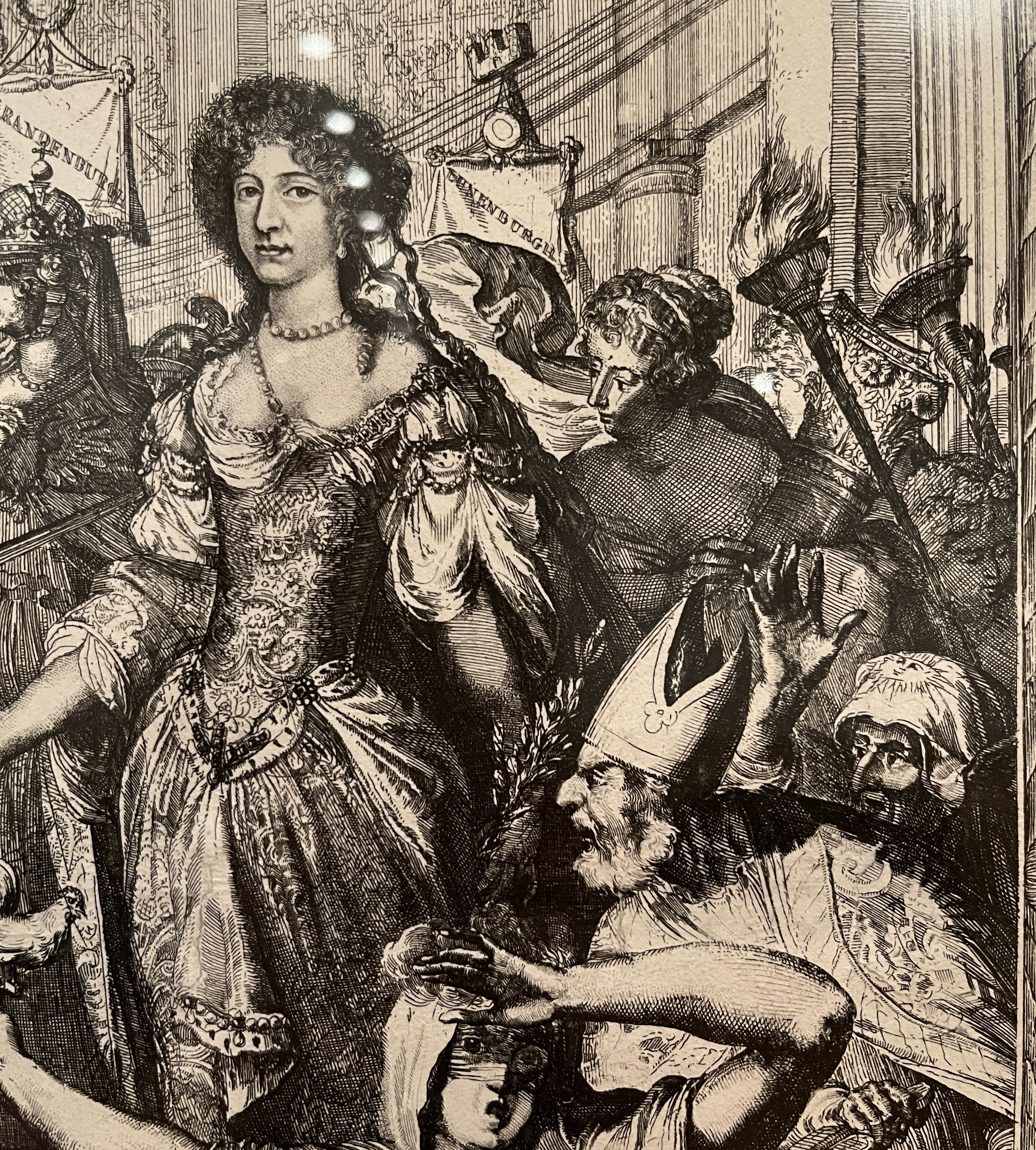
Romeyn de Hooge, Marriage of William and Mary [detail], etching, 1677. Photo by Jessica Hammie.
Oh man, did I love this exhibition. I am technically an art historian, and though my area of research was once contemporary art, my soul yearns to have been a medievalist or early modern scholar. When I walked into the Krannert Art Museum’s Fake News & Lying Pictures: Political Prints in the Dutch Republic and saw the low light? Be still, my heart. Fake News & Lying Pictures, curated by Krannert Art Museum’s Curator of European and American Art, Maureen Warren, is a massive exhibition of 100 works on paper from the Dutch Golden Age, that is, the 17th century. Allow me to rephrase: 100 works on paper — a fragile, easily damaged and destroyed material — from 400 years ago, are on display at the Krannert Art Museum. The collection of works is incredible. The detail on each piece is so intricate, so skillful. The context for the work — empire building, propaganda, satire — are so relevant to today’s world it makes me want to weep. (History rhymes and repeats itself, IMO.) There is so much to uncover in this exhibition. Whether you’re enjoying it for the historical context or the material one, or some combination of both, this was a not-to-be-missed exhibition of the highest caliber. If you did miss it, you can still check out the catalogue. (JH)
BEST new voice: Danyla Nash, first Youth Poet Laureate of Urbana
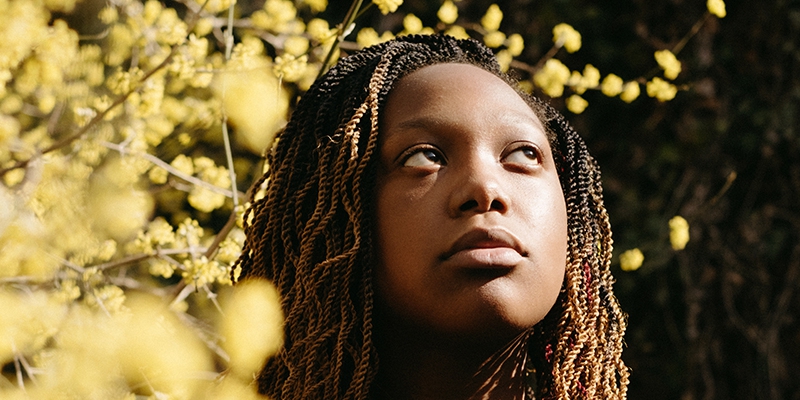
Photo by Anna Longworth-Singer.
Next time you start going down that “if only C-U had x, y, or z” rabbit hole remember this: Urbana has a Youth Poet Laureate. Her name is Danyla Nash and she’s amazing. Not only is Nash a prolific, published poet and spoken word artist, she also starred in Tania Arazi Coambs’s Stoplight at the Station Theatre.
But as our inaugural Youth Poet Laureate, Nash, who was mentored by Ashanti Files, also knows a thing or two about poetry’s power to heal. Coming out the other side of the pandemic, Nash has been helping kids explore poetry as a much needed emotional outlet. In an interview last spring, Nash shared this: “If I can help teens with a vocabulary to help them get through this, then I will be helping my generation.” (DD)
BEST comeback: ReFashioned
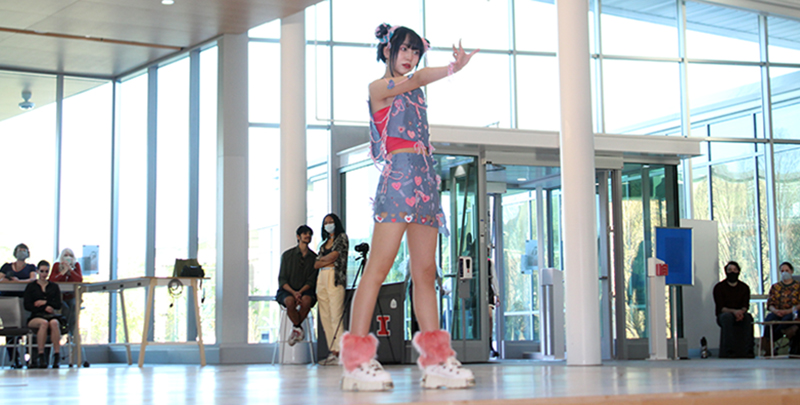
Photo by Debra Domal.
2022 was the year of the comeback, welcoming the return of a full schedule of live programming within the C-U arts scene.
But it is the rare comeback that marks not just the return, but the transformative evolution of a beloved event. And for this writer, that event was ReFashioned. During their two-year COVID hiatus, Susan Becker and her design students were quietly setting the stage for the tour-de-force I witnessed on Saturday, May 7th at the Siebel Center for Design. From the record-breaking audience turnout, to the also recording-breaking number of looks (100), ReFashioned 2022 was indeed everything this long-time fan could have ever hoped for. The airy, minimalist elegance of Siebel’s multi-level glass atrium allowed the models to bring the looks into and throughout the entire audience. In my original review I wrote: “The looks that came down the runway were not only repurposed and recycled, they were inclusive of a range of sizes, shapes, and gender expressions. The designs were, in turn, playful, sophisticated, modest, theatrical, wearable, bold, referential, and forward-thinking.” From the performances on the runway, to the soundtrack filled with Bridgerton remixes, this show brought more joy than I had experienced in months, if not longer. So here’s the lesson to be learned: If you’re going to fight back against centuries of poisonous fashion practices, take your time and do it right. Do it with beauty and do it with joy. (DD)
BEST development: Commitment to murals, mostly in Urbana
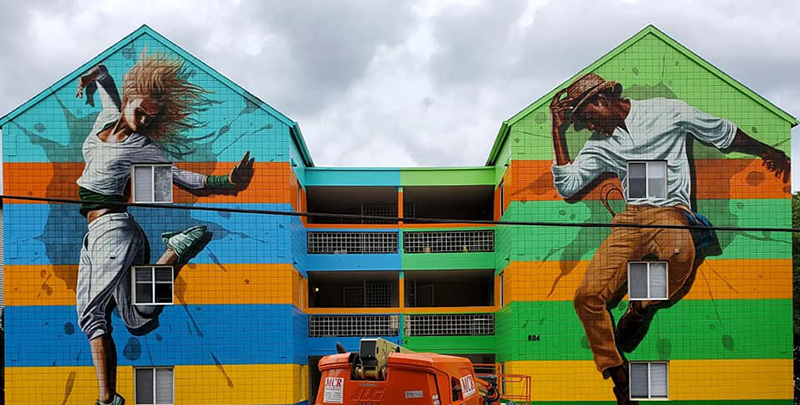
This past summer and fall have seen a steady unveiling of outdoor murals throughout the City of Urbana. From Rafael Blanco’s Dance on Illinois, at 806 W Illinois St, Urbana, to Lisa Kesler’s Summer Rhythm at 25 O’Clock Brewery, residents have been enjoying the benefits of public art in a number of residential, business, and government locations. Funded by public arts grants as well as private funding sources, Urbana’s commitment to mural making continues to deepen. Such support sends a clear message that art, and artists, have value. (DD)
BEST collaboration: Nicole Anderson-Cobb and Latrelle Bright at Allerton Park’s Rooting a Deeper Connection Residency
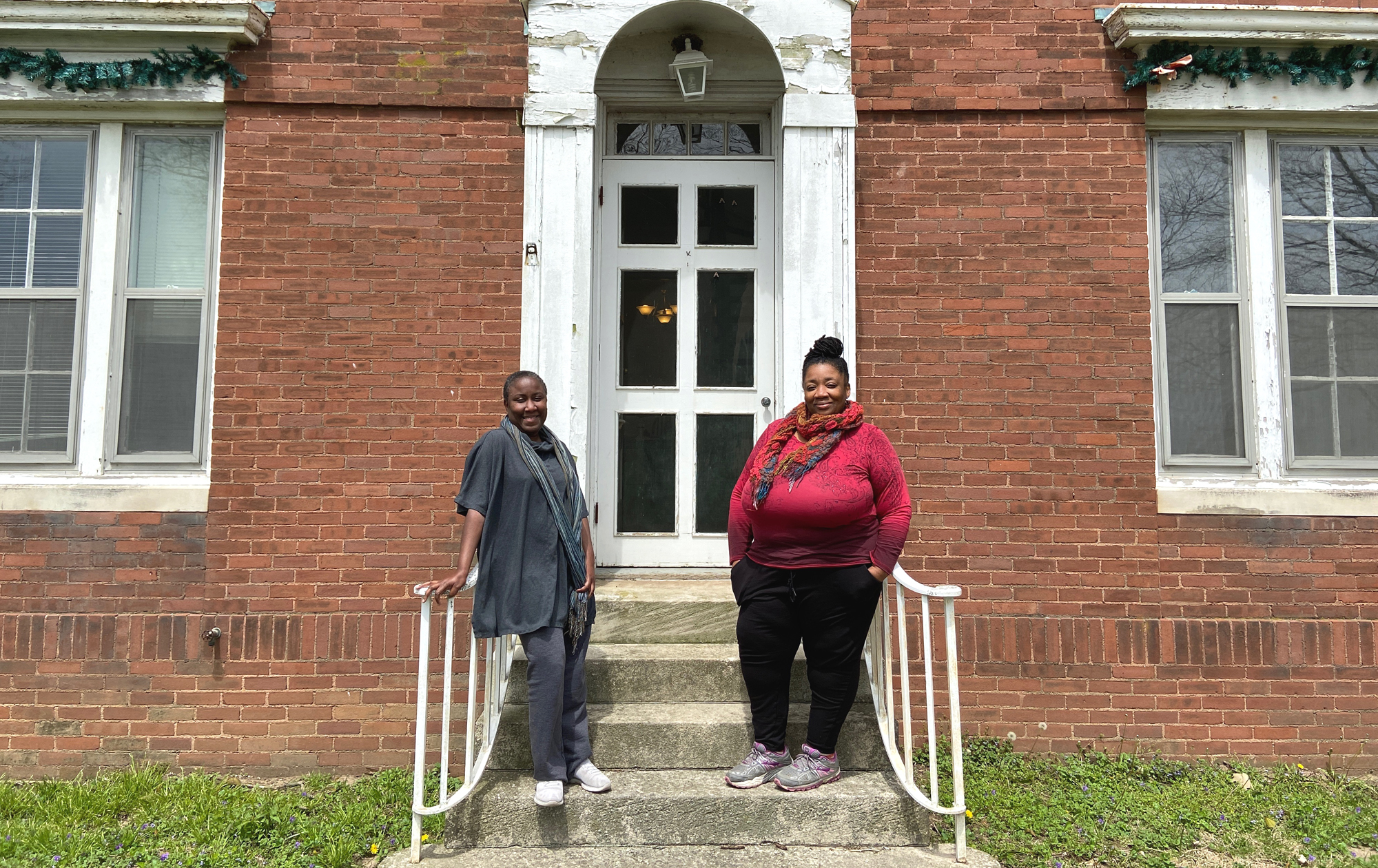
Photo by Jessica Hammie.
Earlier this year, Latrelle Bright and Nicole Anderson-Cobb teamed up for a residency at Allerton Park, part of the Rooting a Deeper Connection initiative that supported BIPOC artists for three week residencies at Allerton.
Unlike many artists-in-residence, Bright and Anderson-Cobb approached this residency as a time for research, not project completion. They dove deep into the Piatt County archives to ask questions about Allerton’s founding and the founding of Monticello, and look for traces of those who have been erased from those stories. Their research was organized around the question, “What has grown on stolen land?”
This collaboration offered so many interesting, tragic, relevant, and necessary lines of questioning. You can read a longform interview I did with them for Sixty Inches from Center, and my thoughts for SP on their “first draft” public engagement in April. I found their research to be generative and essential, and I’m looking forward to seeing how this project continues to develop. (JH)
BEST showcase of Indigenous creators: Neverland and Small Island, Big Song, Krannert Center for the Performing Arts
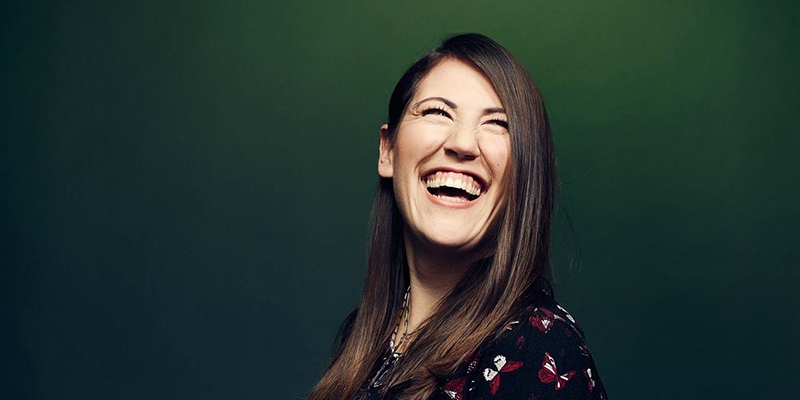
Photo courtesy of Madeline Sayet.
Zooming with writer and director Madeline Sayet was one of the highlights of my year. And during that conversation, Sayet took me through her decision to, as I said in my interview, “navigate a new road towards Neverland.” Universally acknowledged for its problematic portrayal of Indigenous peoples and their cultures, the story of Peter Pan would seem an odd starting point for an emerging Mohegan playwright. But, as I learned in our hour together, it is the only path towards true representation. Let me explain: Raised in a tradition where stories are medicine, Sayet knew that what was required was a “new take on a classic story that strives to increase knowledge and understanding around Indigenous performance.” Particularly while working with a university like ours, Sayet saw there was “power in claiming space in canonical text, in writing one’s self and one’s culture into history.” It was also essential to have the opportunity to bring Native performers into the production. Ultimately, Neverland is a liberation journey, for its writer, for its Native performers, and for its audiences. (DD)
On a Thursday in March, I agreed to go with my husband to the performance of Small Island, Big Song at Krannert Center for the Performings Arts. I didn’t really know what it was about, except that it was music from Indigenous creators from across the South Pacific, mostly talking about climate change. And, yes, that is technically what it was. But it was so much more — so moving, so inspiring. Musicians from Taiwan, Madagascar, Mauritius, Marshall Islands, and Papua New Guinea tour together, making music, and creating interactive visuals to go with that music. The music is beautiful, fun, and inspiring — I suggest you find them on Spotify or listen on their website. It was a reminder that there are Indigenous people across the globe who are enduring the effects of colonization and climate change. (JH)
BEST retrospective: Monk in Retrospect, Urbana-Champaign Independent Media Center
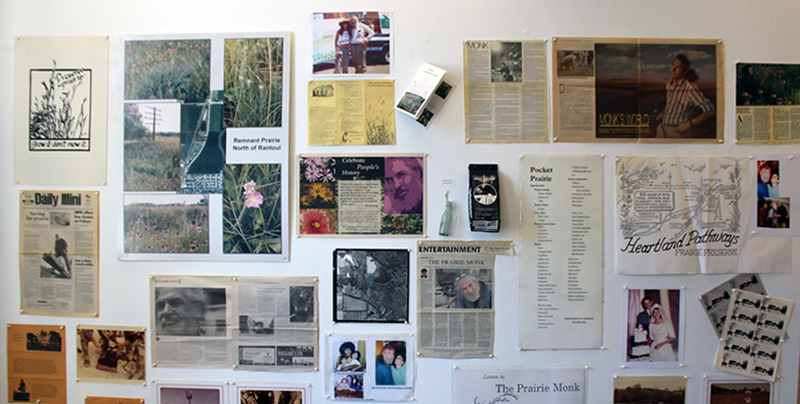
Photo by Debra Domal.
I can honestly say that I was in no way prepared for the impact this seemingly modest exhibition would have on me. In my review of Monk in Retrospect at the IMC, I said that this “eclectic exhibit of words and images created and inspired by Prairie (Dave) Monk defies easy labels.” Part photography exhibit, part library of press clippings, part scrapbook, as a whole, it was a “collective love letter to the man whose commitment to prairie preservation in East Central Illinois, has been unrivaled.” Perhaps more importantly, it was a masterclass in how a community can, and in my opinion, should honor those who spend their lives working to make it a better and more beautiful place. By elevating the art of remembering, Monk in Retrospect did its part to insure that this important work will continue on. (DD)
BEST place to catch an author’s reading, or attend a book club, or buy a copy of your favorite book: The Literary
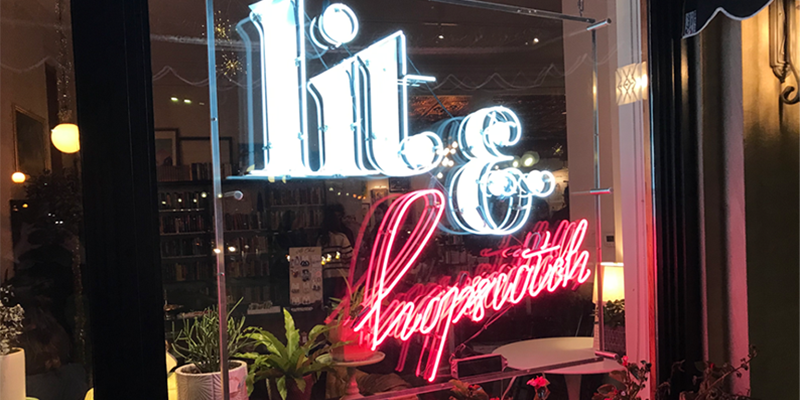
Photo by Kathleen McGowan.
The existence of a thriving indie bookstore speaks volumes about a town’s literary scene and the value it places on showcasing new and emerging — and especially local — writers. Books are not just things you buy. Like good friends, they often find you when you need them most. To have a vibrant shop/cafe/event space fully dedicated to the power of storytelling is something we should never take for granted. The Literary curates the kind of analog experiences that make us better readers, listeners, and thinkers. Conversations over books and coffee. Time spent lingering over physical books and journals. These are signs that the magic of book culture is alive and well at The Literary. (DD)
Debra Domal and Jessica Hammie contributed to this article.








